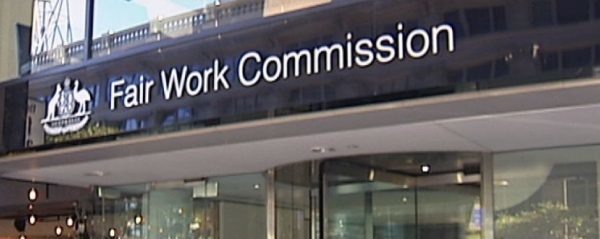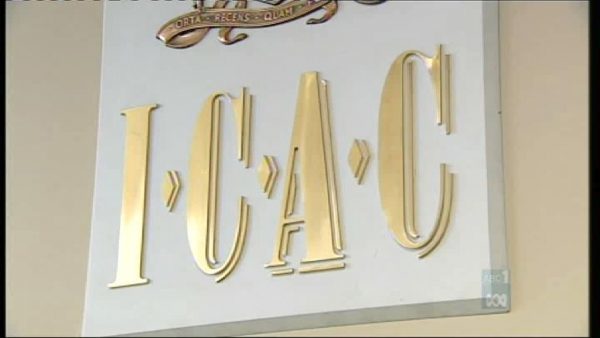
A recent taxpayer alert [Trusts mischaracterising property development receipts as capital gains] concerning property development and the use of trusts is significant for property developers.
Taxpayer Alert 2014/1, describes an arrangement whereby a trust undertakes property development activities as part of its normal business. The developed property, which could be either commercial or residential, is subsequently sold and the proceeds are returned on capital account, resulting in access to the general 50 per cent capital gains discount.
The proceeds are not returned as ordinary income under section 6-5 of the Income Tax Assessment Act 1997 (ITAA 1997), either on a gross basis (as part of a business of property development, where the underlying property constitutes trading stock for the purposes of section 70-10 of the ITAA 1997) or on a net basis (as part of a profit-making undertaking).
The ATO stated it considers that certain arrangements of this type give rise to various issues relevant to taxation laws.
Property developers may be at risk should they be using a trust to access the beneficial capital gains discount, instead of recording sales income on revenue account. The ATO have declared that they have begun audits in this area.
A mischaracterisation has been identified by the ATO where a property, either commercial or residential, is later sold with the proceeds being classified as a capital gain event (which can attract a 50% discount), rather than as ordinary income. The sale of property by a property developer is classified as ordinary income as this action is considered part of the nature of the business.
If caught deliberately trying to use trusts to ‘disguise’ the proceeds of developments, penalties of up to 75% can be applied.
The specific concerns of the ATO and areas they are targeting:
- The property constitutes trading stock on the basis that the trust is carrying on a business of property development
- The gross proceeds from the sale constitutes ordinary income on the basis that the trustee is carrying on a business of property development
- The net profit from the sale is ordinary income on the basis that, although the trustee is not carrying on a business of property development, it is involved in profit making undertaking
WHO ARE THE ATO TARGETING?
- Trusts that have been established for the purpose of acquisition, development and sale of property
- Trusts that have trust deeds stating the purpose of the trust is to hold the development property as a capital asset to generate rental income
- Activity by the taxpayer is opposite to the stated purpose of treating the developed property as a capital asset
- Properties that are sold as little as 13 months after purchase
- Trustees that treat the sale proceeds as being on capital account and claims the general 50% capital gains tax deduction
HOW IS INCOME TAX REGIME APPLICABLE TO PROPERTY TRANSACTIONS
The income tax consequences surrounding dealings with property may be subject to assessment under a number of different parts of the tax law. The result is that dealings in property may have a number of different taxation consequences flowing to vendors of real property.
Identifying the taxing regime is mostly dependent on the determination of two issues, being:
- the characterisation of the transaction; and
- the profile of the taxpayer in relation to the transaction.
The taxing regime that may apply in the context of a property transaction can be divided into three possibilities, being:
- Capital Account – as a gain on the disposal of a CGT asset with taxation taking effect upon the ‘mere realisation’ of an investment in land;
- Revenue Account (Trading Stock) – as a disposal of trading stock, where land is held for sale in the ordinary course of a taxpayer’s business with taxation taking effect when the Land is sold as part of a property development business (where the property is being held for the purpose of re-sale); or
- Revenue Account (Revenue Asset) – as part of a profit-making scheme with taxation taking effect when land is sold as part of an isolated or ‘one-off’ transaction. The transaction has been entered into with a profit-making purpose, and in a sufficiently commercial / business-like manner.
LAND AS TRADING STOCK
In the event that property is sold as part of a property development business, then the property will be subject to the trading stock provisions (Division 70 of the 1997 Act). The issue is therefore whether your activities amount to the carrying on of a property development business. The High Court upheld this view in the FC of T v St Hubert’s Island Pty Limited 78 ATC 4104, where it was held that land would constitute trading stock if it has been acquired for the purpose of resale – including land that is purchased for the purpose of subdivision, development and resale.
LAND AS A CAPITAL GAINS ASSET
When property acquired on or after 20 September 1985 is not held as trading stock of the taxpayer or otherwise on revenue account, but rather is held on capital account by the taxpayer, any gain or loss arising upon disposal of the land will be calculated and assessed under the CGT provisions.
Property held by a taxpayer may be characterised as either a:
- a revenue asset – on the basis that there is an intention by the taxpayer to make a profits on the disposal of the property; or
- a capital asset – on the basis that the property forms part of the profit yielding structure of the taxpayer therefore its disposal will be subject to CGT.
Land held on capital account will be a CGT asset (section 108-5 of the 1997 Act). Joint tenants are treated as owning separate CGT assets proportionate to each tenant’s interest in the CGT asset (section 108-7 of the 1997 Act).
A disposal of a CGT asset occurs upon the occurrence of a ‘CGT event’. Some of the relevant CGT Events applicable to property transactions include:
- CGT event A1 – disposal of a CGT asset by a change in beneficial ownership to another person
- CGT event E2 – transfer of a CGT asset to a trust
- CGT event E4 – capital payments from a unit trust to a unit holder
- CGT event E5 – a beneficiary of a trust becoming entitled to a trust’s CGT asset
- CGT event K4 – a CGT asset becomes trading stock
For CGT assets acquired before 21 September 1999 and held for at least 12 months, the taxpayer can choose to calculate the capital gain based on either:
- the indexed cost base (cost base adjusted for the ‘consumer price index’ up to 30 September 1999); or
- by applying the ‘CGT 50% discount’, which is unavailable for companies (Division 115 of the 1997 Act).
Where the capital gain is made by a trust, the CGT 50% discount is applied and the balance distributed to an individual beneficiary, the beneficiary will ‘gross up’ the distribution apply losses if any then apply the CGT 50% discount to the grossed-up amount. That is the discount effectively flows from the trust to the beneficiary. A similar result occurs when the payment passes through a chain of trusts.
LAND AS A REVENUE ASSET
The disposal of a revenue asset generates ordinary income for the taxpayer. Generally, a ‘revenue asset’ is one that is purchased with a view to profit upon its eventual realization (FCT v Whitfords Beach Pty Ltd 82 ATC 4031). It is more than ‘merely’ realised, but it is not held as an item of trading stock.
The Commissioner of Taxation considered in paragraph 6 of Taxation Ruling TR 92/3 entitled Income tax: profits from isolated transactions that receipts derived from an ‘isolated transaction’ would be assessed as ordinary income under section 6-5 of the 1997 Act if:
- First – the taxpayer entered into the transaction with a profit-making purpose; and
- Secondly – a profit was made in the course of carrying on a business or in carrying out a business operation or commercial transaction.
In Taxation Ruling TR 92/3 the Commissioner of Taxation uses a broad approach to characterising business gains from isolated transactions, stating that for ‘… a transaction to be characterised as a business operation or a commercial transaction, it is sufficient if the transaction is business or commercial in character’.











